3206. 交替组 I
题目描述
给你一个整数数组 colors ,它表示一个由红色和蓝色瓷砖组成的环,第 i 块瓷砖的颜色为 colors[i] :
colors[i] == 0表示第i块瓷砖的颜色是 红色 。colors[i] == 1表示第i块瓷砖的颜色是 蓝色 。
环中连续 3 块瓷砖的颜色如果是 交替 颜色(也就是说中间瓷砖的颜色与它 左边 和 右边 的颜色都不同),那么它被称为一个 交替 组。
请你返回 交替 组的数目。
注意 ,由于 colors 表示一个 环 ,第一块 瓷砖和 最后一块 瓷砖是相邻的。
示例 1:
输入:colors = [1,1,1]
输出:0
解释:
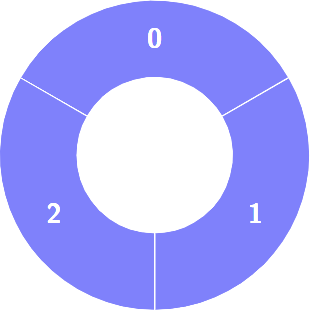
示例 2:
输入:colors = [0,1,0,0,1]
输出:3
解释:
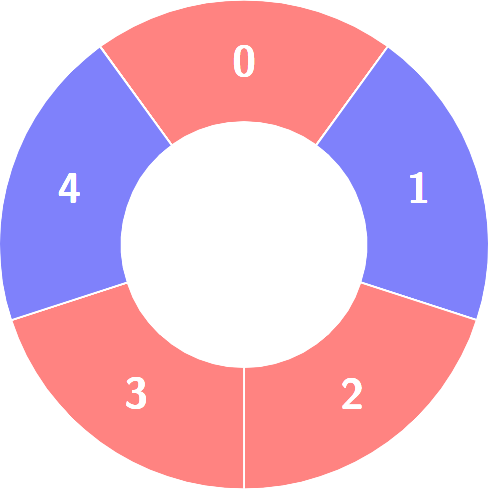
交替组包括:
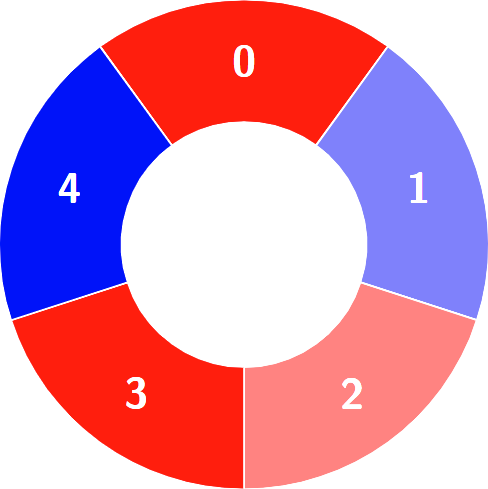
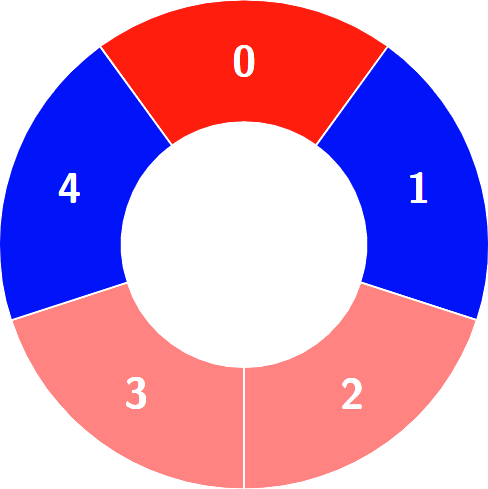
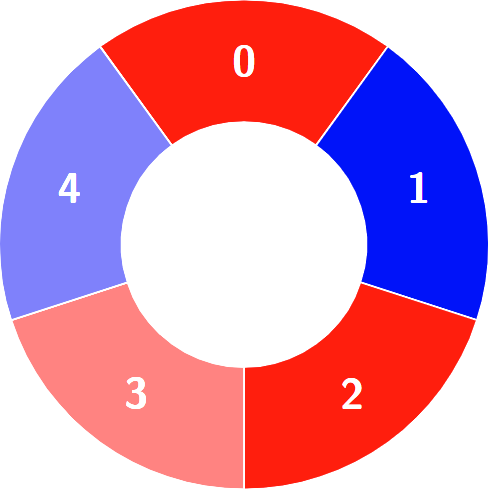
提示:
3 <= colors.length <= 1000 <= colors[i] <= 1
解法
方法一:一次遍历
我们令 $k = 3$,表示交替组的长度为 $3$。
为了方便处理,我们可以将环展开成一个长度为 $2n$ 的数组,然后从左到右遍历这个数组,用一个变量 $\textit{cnt}$ 记录当前交替组的长度,如果遇到了相同的颜色,就将 $\textit{cnt}$ 重置为 $1$,否则将 $\textit{cnt}$ 加一。如果 $\textit{cnt} \ge k$,并且当前位置 $i$ 大于等于 $n$,那么就找到了一个交替组,答案加一。
遍历结束后,返回答案即可。
时间复杂度 $O(n)$,其中 $n$ 为数组 $\textit{colors}$ 的长度。空间复杂度 $O(1)$。
Python3
class Solution:
def numberOfAlternatingGroups(self, colors: List[int]) -> int:
k = 3
n = len(colors)
ans = cnt = 0
for i in range(n << 1):
if i and colors[i % n] == colors[(i - 1) % n]:
cnt = 1
else:
cnt += 1
ans += i >= n and cnt >= k
return ans
Java
class Solution {
public int numberOfAlternatingGroups(int[] colors) {
int k = 3;
int n = colors.length;
int ans = 0, cnt = 0;
for (int i = 0; i < n << 1; ++i) {
if (i > 0 && colors[i % n] == colors[(i - 1) % n]) {
cnt = 1;
} else {
++cnt;
}
ans += i >= n && cnt >= k ? 1 : 0;
}
return ans;
}
}
C++
class Solution {
public:
int numberOfAlternatingGroups(vector<int>& colors) {
int k = 3;
int n = colors.size();
int ans = 0, cnt = 0;
for (int i = 0; i < n << 1; ++i) {
if (i && colors[i % n] == colors[(i - 1) % n]) {
cnt = 1;
} else {
++cnt;
}
ans += i >= n && cnt >= k ? 1 : 0;
}
return ans;
}
};
Go
func numberOfAlternatingGroups(colors []int) (ans int) {
k := 3
n := len(colors)
cnt := 0
for i := 0; i < n<<1; i++ {
if i > 0 && colors[i%n] == colors[(i-1)%n] {
cnt = 1
} else {
cnt++
}
if i >= n && cnt >= k {
ans++
}
}
return
}
TypeScript
function numberOfAlternatingGroups(colors: number[]): number {
const k = 3;
const n = colors.length;
let [ans, cnt] = [0, 0];
for (let i = 0; i < n << 1; ++i) {
if (i && colors[i % n] === colors[(i - 1) % n]) {
cnt = 1;
} else {
++cnt;
}
ans += i >= n && cnt >= k ? 1 : 0;
}
return ans;
}